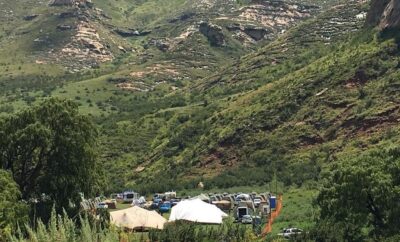Three Dikgosi Monument: A testament to Botswana’s rich cultural heritage and the enduring legacy of its visionary leaders
The Three Dikgosi Monument is a significant landmark in Botswana, commemorating three tribal chiefs who played crucial roles in the country’s history. Here are some fascinating facts about it:
Symbolism: The monument represents unity and cooperation among different ethnic groups in Botswana. It honors the collaboration between three paramount chiefs: Khama III of the Bangwato, Sebele I of the Bakwena, and Bathoen I of the Bangwaketse.
Location: Situated in the heart of the capital city, Gaborone, the monument stands prominently in front of the government enclave. Its central location underscores its importance in Botswana’s national identity.
Design: The monument’s unique design features three bronze statues of the three chiefs mounted on horseback, a rare sight in most monuments. This symbolizes their leadership and authority. The chiefs are depicted wearing traditional attire, a nod to their cultural heritage.
Historical Significance: Khama III, Sebele I, and Bathoen I were instrumental in negotiating with British colonial authorities during Botswana’s transition from a protectorate to an independent nation. Their diplomatic efforts helped preserve Botswana’s sovereignty and cultural integrity.
Unveiling: The monument was unveiled on a momentous day, September 30, 2005, during Botswana’s 39th Independence Day celebrations. This was a significant milestone in the country’s post-colonial history, marking the achievements of its indigenous leaders and their role in shaping the nation.
Architectural Elements: Surrounding the statues are twelve bronze relief panels depicting scenes from Botswana’s history, including traditional ceremonies, hunting scenes, and interactions with European settlers. These panels add depth to the monument’s narrative and provide insights into Botswana’s rich cultural heritage.
Cultural Legacy: The Three Dikgosi Monument is more than a tourist attraction. It stands as a powerful symbol of pride for Batswana (the people of Botswana), a testament to the country’s commitment to democracy and cultural preservation, and a reminder of Botswana’s pre-colonial past and the contributions of its indigenous leaders to the nation’s development.
Overall, the Three Dikgosi Monument is a testament to Botswana’s rich cultural heritage and the enduring legacy of its visionary leaders. It embodies the spirit of unity, resilience, and progress that defines the nation’s identity on the global stage.



